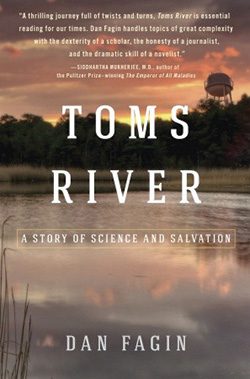
Shortly after his 10th birthday, Mike, a normally active boy, fell ill and was confined to a wheelchair, his “feet and hands bent like an old man’s and too painful to move.” Ominous bruises began to appear on his body.
Diagnosed with a rare form of leukemia, Mike is one of many children from Toms River described in Dan Fagin’s Toms River: A Story of Science and Salvation (Bantam Books), an engaging and well-documented exposé about chemical contamination and the discovery of a cancer cluster in the Ocean County town. A science journalism professor at New York University, Fagin spent five years researching and writing Toms River. The result is a comprehensive case study of the environmental and human costs of chemical pollution.
In compelling detail, Fagin chronicles the ways chemical manufacturers such as Ciba-Geigy and Union Carbide secretly disposed of toxic waste in the town’s namesake river. He succeeds in making the science of cancer epidemiology interesting, notwithstanding one lengthy section on biostatistics. The book introduces new information, such as the identity of the mystery nurse whose efforts spurred a state investigation. Fagin interviewed affected parents and describes how they organized to fight the polluters, taking legal action that prompted the companies to settle—without admitting liability—for an amount that reportedly topped $35 million.
Toms River is a cautionary tale about the Faustian tradeoffs between unfettered economic growth and industrial pollution. The lessons of Toms River will resonate beyond New Jersey to places undergoing rapid industrialization, like China and India.



